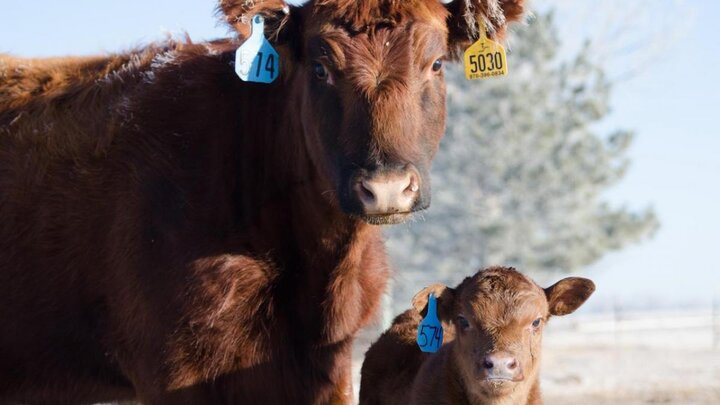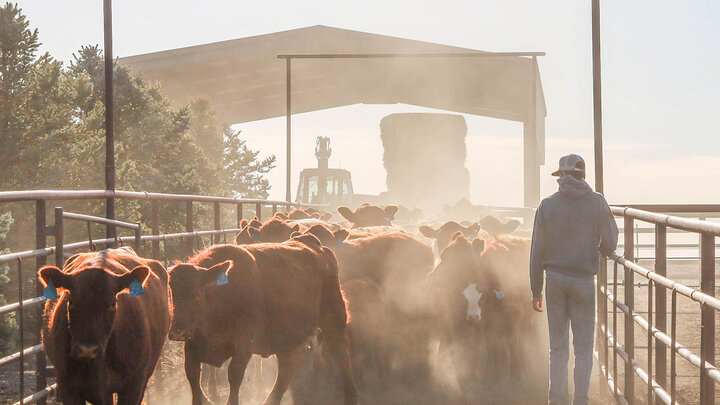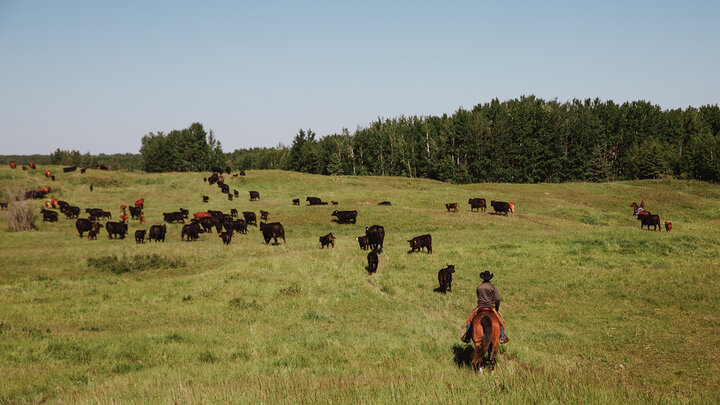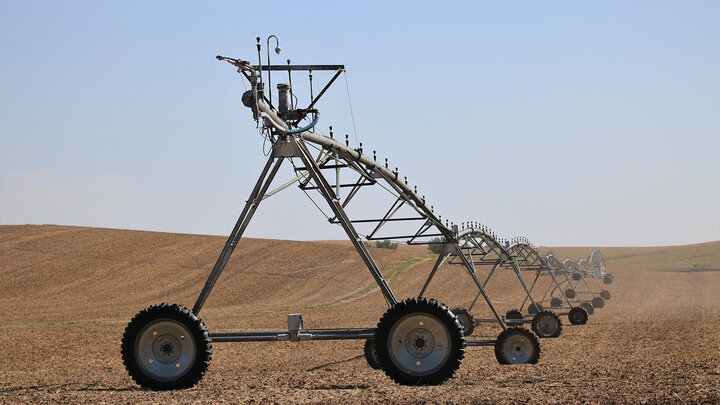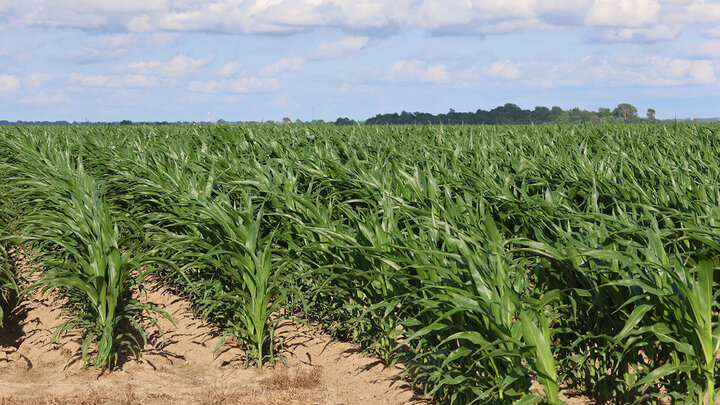The following is a summary of the webinar “Adding Value to Livestock Through Approved Certification Programs” given on January 28, 2020 as part of the Department of Agricultural Economics at the University of Nebraska-Lincoln Extension Farm and Ranch Management team’s weekly webinar series. The webinar can be accessed at https://farm.unl.edu/webinars and an accompanying podcast is posted above. Both are provided free to the public.
“Value-added” certification programs
Livestock buyers are becoming more scrutinizing. They want more information about the livestock they bid on and eventually purchase to make more informed decision. Traditionally, producers have self-verified livestock attributes which cannot be visually observed. These unobserved attributes have been identified by livestock buyers as important indicators of future livestock performance. In addition, these unobserved attributes are often characteristics that consumers are willing to pay premiums for. Since not all producers evaluate cattle in the same manner and to provide verification for consumers, value-added programs that are certified by a third-party entity have emerged. This allows information to be clearly and effectively communicated to prospective buyers during the marketing process.
There are many certified programs that producers can participate in. These programs are generally available into four categories: (1) Health, (2) Genetics, (3) Nutrition background and (4) Other eligibility, such as Non-Hormone Treated Cattle (NHTC), Natural, Global Animal Partnership (GAP). Enrollment costs vary, so each producer should identify programs they believe will fit their livestock, production practices, and management preference. Since these programs often require an initial and ongoing financial investment, it is prudent to understand the long-term trends in the program livestock are participating in. The emphasis is on long-term averages as premiums will vary from year to year. Discussing these programs with your marketing partner(s) or with other industry trusted individuals can help determine what programs would be appropriate.
Programs available to producers
Some of the better-established certification programs for cow-calf operations include NHTC, Natural, GAP, CARE, Certified Angus Beef (CAB), Age-source Verified, and Top Dollar Angus. Health-related verifications, like VAC 45 and VAC 60 should also be considered if selling animals at lighter weights. A commodity price is offered to producers who sell commodity calves (i.e. calves without any information on health, genetics and/or management background verifications. Value-added calves that have been certified often garner a premium above commodity cattle price.
For cattle feedlot operations, NHTC, Natural, Age-source verified, Certified Organic, GAP, and CAB. Premiums for fed cattle are paid on a carcass-value basis. These premiums are in addition to the price paid for cattle on either a live or dressed basis. Packers pay premiums for certain fed cattle because they possess attributes that make meat export eligible and/or can be labeled and sold at a premium by retailers. Some wholesale meat can only be exported if they possess certain attributes. For example, after Bovine Spongiform Encephalopathy (BSE), many countries required cattle to be age-source verified to be export eligible. Since then, other countries have required cattle to not be treated with hormones during their lifetime. Premiums are one-way packers can incentivize cattle feedlots to produce more of this type of animal. These premiums are passed down the supply chain to cow-calf producers.
Hog producers also have several programs which they can participate in. Some of the most common programs include Beta Agonist Free, Delivery Time, Volume, Pork Quality Assurance, and Transportation. As hog production has become more integrated, premiums have shifted from production attributes to logistical considerations. Beta Agonist Free (i.e. no hormones) was a popular value-added production practice driven by export markets. As African Swine Fever (ASF) reduced global hog populations, the largest US pork producers voluntarily removed beta agonists from most of the production to capture additional market share. This has coincided with an increasing domestic demand from consumers to produce hogs that are hormone and antibiotic free.
Poultry production is predominately composed of contract production by a few companies. Producers are responsible for growing animals to certain specifications and are paid on a per bird, per bird space, or total weight. As such, the USDA does not gather nor report programs or premiums for independent poultry producers.
Choosing value-added program(s) that are right for your livestock
How does one choose an appropriate value-added livestock program? The answer to this question depends greatly on each producer’s unique operation. For example, for a cow-calf operation were animals are almost always healthy, and you typically need to treat very few with antibiotics, a Natural program could be a good fit. Growthy calves, that can wean off at heavy weights without implants, would appear to fit NHTC.
For both cattle and hogs, there are programs that favor certain genetics. Finding out whether the breed(s) you're using has a tagging program that can help your animals retain their breed identity as they enter the marketplace is one simple way to capture additional value. For example, a couple of common cattle breed programs would be the Red Angus "yellow tag" program and Charolais Advantage. Top Dollar Angus also provides the ability to differentiate groups of Angus and Red Angus feeder calves that objectively rank in the top 25% of each respective breed for growth and carcass traits.
The most important consideration when choosing any value-added program is to do your due diligence. There are many value-added programs available for both cattle and hog producers in today's industry. Selecting one or more to enroll in as a producer can help you receive more for your animals on sale day. Carefully, study different programs and understand that the program that is good for your neighbor may not be a good fit for your operation.
Do Value-added Programs Pay?
Understanding the additional premiums animals receive at the time of sale and how consistent those premiums are over time are critical steps in selecting a value-added program. Producers develop and incorporate attributes into livestock because consumers are willing to pay for those attributes when they purchase products at retail and food service. As such, programs that are directly tied to product attributes at retail are likely to be the highest and the more consistent. Premiums that are consistently signal to producers that there are not enough meat with certain attribute(s). Producers see these high premiums and increase production causing the premium to decrease over time. Similarly, consumer preferences fluctuate and change over time. Combining consumer preferences and producers ability to supply makes premiums change year-to-year. Premiums that are more consistent, even if smaller nominally, are a safe place for producers to start.
Prices for different retail meat products are tracked by the USDA-AMS. They collect prices for conventional, organic, and branded products by different regions as advertised by individual retail stores. Since prices exist only for advertised products, prices for some products are not reported on a consistent basis. For beef, boneless New York Strip Steak and 80-89% ground beef are the most consistent products reported. Organic boneless New York Strip Steak averages $6.50 per lb. premium compared a conventional product and organic ground beef 80-89% averages a $2.50 per lb. compared to a conventional product. For pork, packaged and processed products are the most advertised. Organic boneless Packaged/Sliced Ham, 1 Lb. averages $8.50 per lb. premium compared a conventional product and Sliced Bacon, 1 Lb. Pkg averages a $4.25 per lb. compared to a conventional product. For chicken, parts are more commonly sold than whole birds are the most advertised. Organic Boneless/Skinless Breast averages $2.00 per lb. premium compared a conventional product and Drumsticks averages a $2.15 per lb. compared to a conventional product. Organic premiums for other products are tracked in the USDA-AMS Reports WA_LO100 and WA_LO101.
The USDA-AMS also publicly tracks several value-added programs between livestock feeders and packers. Fewer publicly available data on value-added programs exist between livestock breeders and livestock feeders. For cattle, the four most tracked and reported value-added programs are CAB, All-Natural, NHTC, and Age-Source Verified. Premiums for these programs differ. On average, carcasses that grade CAB, NHTC, or All-Natural return premiums of $3.80 per cwt., $19.80 per cwt., and $30.80 per cwt., respectively. These premiums have been very consistent month-to-month since 2017. For hogs, the three most tracked and reported value-added programs are Transportation, Delivery Time, and Beta Agonist Free. Premiums for these programs differ. On average, carcasses that have Transportation, Delivery Time, or Beta Agonist Free return premiums of $1.50 per cwt., $0.90 per cwt., and $50 per cwt., respectively. Since 2017, the premiums have been increasing for Transportation, steady for Delivery Time, and decreasing for Beta Agonist Free. Other non-carcass merit premiums have been negligible to zero.
The emerging role of technology
Three trends are driving the use of technology in livestock production. First, consumers and ultimately packers are requiring more transparency in the way animals are produced. Recent survey works suggests that 2 of every 3 consumers believe it is very or somewhat important to understand how their food is produced. This creates a need for retailers and packers to monitor and verify production claims. Second, skilled farm labor is continuing to diminish. As labor supply becomes less available, producers wanting to maintain the same level of production will likely need to leverage technology to replace some skilled labor. Third, fewer resources will be available for producers to utilize. Fewer resources implies that producers will need to use greater judgement on how and when resources are used to keep a similar amount of production. These three trends will continue to drive the need and adoption of technology in livestock production.
Livestock technology has and will continually evolve. With the emergence of the personal computer and internet, livestock technology is trending towards more electronic formats and away from hard copy records. The application of technology varies from inventory management and health monitoring to ear tag and DNA traceability. The primary aim of developed technologies is to link end products (i.e. retail and food service meat products) with animal genetics, origin, and farming methods (i.e. livestock production). Technologies that do this and that consumers trust will add the most value back to producers.
Frequently Asked Questions
Q: What is the best method for small producers to participate in value-added certification programs?
A: Smaller producers are likely to get the most long-term benefit from the marketplace if all livestock are uniform in weight and color/breed. Producers unable to accomplish this by themselves should seek to work with neighbors, management, and technology to create a uniform load of livestock. Even if livestock are quality and in certification programs, it is hard for livestock in sub lot loads to garner as high of premiums compared to full lot loads. These full lot loads open access to many more markets.
Q: What is the role of the marketing partner in value-added certification programs?
A: The most effective way for any producer to get the most value for their animals is to find a marketing partner that is willing to ensure that all buyers are aware the attributes your livestock possess. Often this requires an open and frank conversation with marketing partners you are currently using.
Q: How does one motivate their marketing partner to advertise all attributes your livestock possess?
A: Producers need to be proactive in working with their marketing partners to ensure that they are willing to appropriately and consistently advertise all attributes your livestock possess. Remember, producers employ marketing partners to facilitate the selling of their livestock. As such, there should be an understanding that they work for the producer. Producers may need to seek out additional or different marketing partners if their current arrangement is unwilling to meet your level of satisfaction in advertisement and promotion.
Q: Does information people are listing with livestock regarding production, handling, and management claims need to come from a third-party verification system to be valid?
A: The difference between third-party verification and producers claiming attributes is how the end-product can be sold. Only animals raised under approved third-party certification programs can be sold in retail stores using labels to signal to consumers that the meat products possess approved attributes. Buyers are less willing to pay premiums for livestock that possess program attributes that have not been certified since they would be unable to recoup premium costs when they sell animals/carcasses. Smaller private sales for personal consumption would not need to be certified since they are not entering into retail stores. Producers selling this type of livestock are generally capturing local premiums as well.
Q: Do all production, handling, and management claims need to be third-party verified?
A: No. Some attributes require certification, other attributes are not required but encouraged, and others are not required to be certified. This would depend on the program livestock are enrolled in. The general trend in the market is moving towards third-party certification programs were claims and attributes can be verified and quantified. Livestock with these claims are more likely to dominate the marketplace in the coming years.
Q: There are many value-added programs available. How do I choose the program that is going to give my operation the best financial return?
A: There are many value-added programs available for producers. The easiest approach is for producers to evaluate their operation and determine what practices they are currently engaged in. Then make a list of small modifications that they would be willing to make to the current production, management, or record-keeping practices. Then determine which programs fit your operation and evaluate the long-term premiums and costs associated within the chosen programs. Breed associations, veterinarians, animal health representatives, feed suppliers, local livestock organizations, or state university representatives are all individuals who can help producers in this process. For producers that do not have prior experience with value-added programs, it is safest to select a low-cost program that does not require significant changes to the current operation to become familiar with the costs, frequency of audits, and record-keeping requirements. This allows producers to obtain a low-cost introduction to whether they desire to make value added programs an ongoing part of the operation.
Q: How does the producer enroll certification program?
A: These programs verify the length of application and records required for enrollment. Producers who are wishing to enroll in a program should reach out to the specific program representative for more information.
Q: What are the costs associated with value-added programs?
A: Common costs include any additional tags, technology, record-keeping infrastructure, and annual audits. Tag costs generally vary from $1-3 dollars per head and are required for every animal entering a program. Technology and record-keeping infrastructure are other one-time costs will depreciate over the usable life of the asset. Some programs use annual audits to ensure that producer’s production, animal health, and management practices still qualify for the enrolled certified programs. Who pays for these audits, varies across programs.
Q: What is done with the information that is collected at my operation?
A: There is a difference between data and information. Data that is stored in databases at third-party companies are generally de-identified. In other words, operational data is associated with a sequence of numbers and/or letters and not with a specific operation name. Data privacy laws generally prohibit companies from combining operational data points together without producers’ prior consent.
Information comes by combining different data points. You would offer up to the marketplace during normal transactions, there is very little proprietary information. For example, information such as vaccination, weight, or production practices are all attributes one would wish to advertise when selling livestock to downstream partners. This type of data is not proprietary. If your operation is part of a longer larger supply chain effort to coordinate cattle, then understanding what information is shared downstream to downstream partners and what information is received in return. As with all arrangements, the marketing partners is often the person who makes these succeed or fail.
Elliott Dennis is an assistant professor of livestock marketing in the Department of Agricultural Economics at the University of Nebraska-Lincoln.
Tom Brink is CEO of the Red Angus Association of America.
Andrew Dorn is the Global Product Marketing Manager at Allflex Livestock Intelligence.
